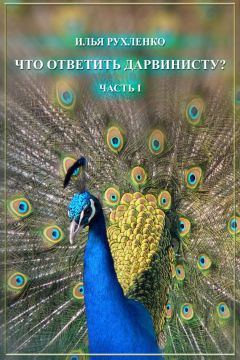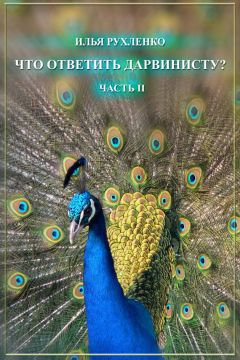Grantham R., Gautier C., Gouy M., Mercier R., Pave A. Codon catalog usage and the genome hypothesis // Nucleic Acids Res. 1980. V. 8 № 1. P. r49-r62.
Grehan J.R., Schwartz J.H. Evolution of the second orangutan phylogeny and biogeography of hominid origins // Journal of Biogeography. 2009. V. 36. № 10. P. 1823–1844.
Grether G.F. Carotenoid limitation and mate preference evolution: a test of the indicator hypothesis in guppies (Poecilia reticulata) // Evolution. 2000. V. 54. P. 1712–1724.
Gura T. Bones, molecules… or both? // Nature. 2000. V. 406. P. 230–233.
Gustafsson С., Govindarajan S., Minshull J. Codon bias and heterologous protein expression // Trends Biotechnol. 2004. V. 22. № 7. P. 346–53.
Hackett S.J. et al. A phylogenomic study of birds reveals their evolutionary history // Science. 2008. V. 320. № 5884. P. 1763–1768.
Hendrickson D.A., Krejca J.K., Martinez J.M.R. Mexican blindcats genus Prietella (Siluriformes: Ictaluridae): an overview of recent explorations // Environmental Biology of Fishes. 2001. V. 62. P. 315–337.
Howlett R.J., Majerus M.E.N. The understanding of industrial melanism in the peppered moth (Biston betularia) (Lepidoptera: Geometridae) // Biol J Linn Soc Lond. 1987. V. 30. P. 31–44.
Hughes K.A., Du L., Rodd F.H., Reznick D.N. Familiarity leads to female mate preference for novel males in the guppy, Poecilia reticulate // Anim. Behav. 1999. V. 58. P. 907–916.
Izzo A.S., Tibbets E.A. Spotting the top male: sexually selected signals in male Polistes dominulus wasps // Animal Behaviour. 2012. V. 83. P. 839–845.
Jantzen B., Eisner T. Hindwings are unnecessary for flight but essential for execution of normal evasive flight in Lepidoptera // PNAS. 2008. V. 105. № 43. P. 16636–16640.
Jones F. Insect colouration and the relative acceptability of insects to birds // Trans. Royal Entomol. Soc. London. 1932. V. 82. P. 443–453.
Jones A.G., Ratterman N.L. Mate choice and sexual selection: What have we learned since Darwin? // PNAS. 2009. V. 106. № 1. P. 10001–10008.
Kachroo A.H., Laurent J.M., Yellman C.M., Meyer A.G., Wilke C.O., Marcotte E.M. Systematic humanization of yeast genes reveals conserved functions and genetic modularity // Science. 2015. V. 348. P. 921–925.
Kalinka A.T., Varga K.M., Gerrard D.T., Preibisch S., Corcoran D.L., Jarrells J.,Ohler U., Bergman C.M., Tomancak P. Gene expression divergence recapitulates the developmental hourglass model // Nature. 2010. V. 468. P. 811–814.
Kane J.F. Effects of rare codon clusters on high-level expression of heterologous proteins in Escherichia coli // Current Opinion in Biotechnology. 1995. V. 6. №. 5, P. 494–500.
Karl I., Fischer K. Old male mating advantage results from sexual conflict in a butterfly // Animal Behaviour. 2013. V. 85. P. 143–149.
Karl I., Neuskin S., Fischer K. Dissecting the mechanisms underlying old male mating advantage in a butterfly // Bevav Ecol Sociobiol. 2013. V. 67. P. 837–849.
Karino K., Kobayashi M. Male alternative mating behaviour depending on tail length of the guppy, Poecilia reticulate // Behaviour. 2005. V. 142. P. 191–202.
Kehl T., Burmeister M.F.W.T., Donke E., Kohn N.A.K., Metschke K., Pfender D., Karl I., Fischer K. Pheromone blend does not explain old male mating advantage in a butterfly // Ethology. 2014. V. 120. № 11. P. 1137–1145.
Kettlewell H.B.D. A survey of the frequencies of Biston betularia (L.) (Lepidoptera) and its melanic forms in Great Britain // Heredity. 1958. V. 12. P. 51–72.
Kettlewell H.B.D. Further experiments on industrial melanism in Lepidoptera // Heredity. 1956. V. 10. P. 287–301.
Kettlewell H.B.D. Insect survival and selection for pattern // Science. 1965. V. 14. P. 1290–1296.
Kettlewell H.B.D. Selection experiments on industrial melanism in Lepidoptera // Heredity. 1955. V. 9. P. 323–342.
Kettlewell H.B.D. The evolution of melanism: the study of a recurring necessity, with special reference to industrial melanism in the Lepidoptera. Oxford University Press, Clarendon, 1973. 448 p.
Kingsolver J.G. Predation, thermoregulation, and wing color in pierid butterflies // Oecologia. 1987. V. 73. P. 301–306.
Klomp J., Athy D., Kwan C.W., Bloch N.I., Sandmann T., Lemke S., Schmidt-Ott U. A cysteine-clamp gene drives embryo polarity in the midge Chironomus // Science. 2015. V. 348. № 6238. P. 1040–1042.
Kodandaramaiah U. The evolutionary significance of butterfly eyespots // Behavioral Ecology. 2011. V. 22. № 6. P. 1264–1271.
Kodandaramaiah U., Lindenfors P., Tullberg B.S. Deflective and intimidating eyespots: a comparative study of eyespot size and position in Junonia butterflies // Ecol Evol. 2013. V. 3. № 13. P. 4518–4524.
Kodandaramaiah U., Vallin A., Wiklund C. Fixed eyespot display in a butterfly thwarts attacking birds // Anim Behav. 2009. V. 77. P. 1415–1419.
Kodric-Brown A., Nicoletto P.F. Female choice in the guppy (Poecilia reticulata) // Behav. Ecol. Sociobiol. 2001. V. 50. P. 346–351.
Konopka G., Bomar J.M., Winden K., Coppola G., Jonsson Z.O., Gao F., Peng S., Preuss T.M., Wohlschlegel J.A., Geschwind D.H. Human-specific transcriptional regulation of CNS development genes by FOXP2 // Nature. 2009. V. 462. P. 213–217.
Kozmik Z., Daube M., Frei E., Norman B., Kos L., Dishaw L.J., Noll M., Piatigorsky J. Role of Pax genes in eye evolution: a cnidarian PaxB gene uniting Pax2 and Pax6 functions // Dev Cell. 2003. V. 5. № 5. P. 773–785.
Kozmik Z., Ruzickova J., Jonasova K., Matsumoto Y., Vopalensky P., Kozmikova I., Strnad H., Kawamura S., Piatigorsky J., Paces V., Vlcek C. Assembly of the cnidarian camera-type eye from vertebrate-like components // PNAS. 2008. V. 105. № 26. P. 8989–8993.
Kunin E.V. The biological Big Bang model for the major transitions in evolution // Biology Direct. 2007. V. 2. P. 21.
Land M.F. Visual acuity in insects // Annu. Rev. Entomol. 1997. V. 42. P. 147–177.
Laurin M., Meunier F.J., Germain D., Lemoine M. A microanatomical and histological stydy of the paired fin skeleton of the Devonian sarcopterygian Eusthenopteron foordi // Journal of Paleontology. 2007. V. 81. № 1. P. 143–153.
Lees D.R., Creed E.R. Industrial melanism in Biston betularia: the role of selective predation. // J. Anim. Ecol. 1975. V. 44. P. 67–83.
Ley C., Watt W.B. Testing the «mimicry» explanation for the Colias «alba» polymorphism: palatability of Colias and other butterflies to wild bird predators // Funct. Ecol. 1989. V. 3. P. 183–192.
Liebert T.G., Brakefield P.M. Behavioural studies on the peppered moth Biston betularia and a discussion of the role of pollution and epiphytes in industrial melanism // Biol J Linn Soc Lond. 1987. V. 31. P. 129–150.
Lopez S. Parasitized female guppies do not prefer showy males // Animal Behaviour. 1999. V. 57. P. 1129–1134.
Lovejoy C.O. Reexamining human origins in light of Ardipithecus ramidus // Science. 2009. V. 326. № 5949. P. 74e1-74e8.
Lyytinen A., Alatalo R.V., Lindstrom L., Mappes J. Are European white butterflies aposematic? // Evolutionary Ecology. 1999. V. 13. P. 709–719.
Lyytinen A., Alatalo R.V., Lindstrom L., Mappes J. Can ultraviolet cues function as aposematic signals? // Behav Ecol. 2001. V. 12. P. 65–70.
Lyytinen A., Brakefield P.M., Lindstrom L., Mappes J. (b) Does predation maintain eyespot plasticity in Bicyclus anynana? // Proc. R. Soc. Lond. B. 2004. V. 271. P. 279–283.
Lyytinen A., Brakefield P.M., Mappes J. Significance of butterfly eyespots as an anti-predator device in ground-based and aerial attacks // Oikos. 2003. V. 100. P. 372–379.
Lyytinen A., Lindstrom L., Mappes J. (а) Ultraviolet reflection and predation risk in diurnal and nocturnal Lepidoptera // Behavioral Ecology. 2004. V. 15. № 6. P. 982–987.
Majerus M.E.N. Industrial Melanism in the peppered moth, Biston betularia: an excellent teaching example of Darwinian evolution in action // Evolution: Education and Outreach. 2009. V. 2. P. 63–74.
Mallett J. The peppered moth: a black and white story after all // Genet Soc News. 2004. V. 50. P. 34–38.
Mani G.S., Majerus M.E.N. Peppered moth revisited: analysis of recent decreases in melanic frequency and predictions for the future // Biol J Linn Soc Lond. 1993. V. 48. P. 157–165.
Marin M. Folding at the rhythm of the rare codon beat // Biotechnology Journal, 2008. V. 3. P. 1047–1057.
Marsh N., Rothschild M. Aposematic and cryptic Lepidoptera tested on the mouse // J. Zool. Lond. 1974. V. 174. P. 89–122.
Mastro V.C. Evaluation of disparlure-baited traps / In: The gypsy moth: research toward integrated pest management. Ed. by Doane C.C., McManus M.L. Technical Bulletin 1584, Forest Service, US Department of Agriculture, Washington, 1981. P. 549–554.
Matthews R. Scientists pick holes in Darwin moth theory. The Sunday Telegraph, March 14, 1999.
Merilaita S., Vallin A., Kodandaramaiah U., Dimitrova M., Ruuskanen S., Laaksonen T. Number of eyespots and their intimidating effect on naive predators in the peacock butterfly // Behav Ecol. 2011. V. 22. P. 1326–1331.
Mikkola K. On the selective force acting in the industrial melanism of Biston and Oliga moths (Lepidoptera: Geometridae and Noctuidae) // Biol J Linn Soc Lond. 1984. V. 21. P. 409–421.
Mikkola K. Resting site selection of Oliga and Biston moths (Lepidoptera: Noctuidae and Geometridae) // Acta Entomol Fenn. 1979. V. 45. P. 81–87.
Morgan M.H., Carrier D.R. Protective buttressing of the human fist and evolution of hominin hands // The Journal of Experimental Biology. 2013. V. 216. P. 236–244.
Nicoletto P.F. Offspring quality and female choice in the guppy, Poecilia reticulata // Anim. Behav. 1995. V. 49. P. 377–387.
Niedzwiedzki G., Szrek P., Narkiewicz K., Narkiewicz M., Ahlberg P.E. Tetrapod trackways from the early Middle Devonian period of Poland // Nature. 2010. V. 463. P. 43–48.
Nilsson D.-E., Gislén L., Coates M.M., Skogh C., Garm A. Advanced optics in a jellyfish eye // Nature. 2005. V. 435. P. 201–205.
Olofsson M., Jakobsson S., Wiklund C. (b) Bird attacks on a butterfly with marginal eyespots and the role of prey concealment against the background // Biological Journal of the Linnean Society. 2013. V. 109. P. 290–297.
Olofsson M., Lovlie H., Tibblin J., Jakobsson S., Wiklund C. (a) Eyespot display in the peacock butterfly triggers antipredator behaviors in naïve adult fowl // Behavioral Ecology. 2013. V. 24. P. 305–310.
Olofsson M., Vallin A., Jakobsson S., Wiklund C. Marginal eyespots on butterfly wings deflect bird attacks under low light intensities with UV wavelengths // PLoS ONE. 2010. V. 5. P. e10798.
Paley W. Natural Theology: or, Evidences of the Existence and Attributes of the Deity. J. Faulder, London, 1802.
Parker J., Tsagkogeorga G., Cotton J.A., Liu Y., Provero P., Stupka E., Rossiter S.J. Genome-wide signatures of convergent evolution in echolocating mammals // Nature. 2013. V. 502, P. 228–231.
Poelstra J.W., Vijay N., Bossu C.M., Lantz H., Ryll B., Muller I., Baglione V., Unneberg P., Wikelski M., Grabherr M.G. Wolf B.W. The genomic landscape underlying phenotypic integrity in the face of gene flow in crows // Science. 2014. V. 344. P. 1410–1414.
Pough F.H., Brower L.P. Predation by birds on great southern white butterflies as a function of palatability, sex, and habitat // American Midland Naturalist. 1977. V. 98. № 1. P. 50–58.
Prudic K.L., Jeon C., Cao H., Monteiro A. Developmental plasticity in sexual roles explains mutual sexual ornamentation // Science. 2011. V. 331. P. 73–75.
Quint M., Drost H.-G., Gabel A., Ullrich K.K., Bonn M., Grosse I. A transcriptomic hourglass in plant embryogenesis // Nature. 2012. V. 490. P. 98–101.
Richardson M., Hanken J., Gooneratne M., Pieau C., Paynaud A., Selwood L., Wright G. There is no highly conserved embryonic state n the vertebrates: implications for current theories of evolution and development. // Anat Embryol. 1997. V. 196. P. 91–106.
Richardson M.K., Keuck G. Haeckel’s ABC of evolution and development // Biol. Rev. 2002. V. 77. P. 495–528.
Rivera M.C., Lake J.A. The ring of life provides evidence for a genome fusion origin of eukaryotes // Nature. 2004. V. 431. P. 152–155.
Robertson K.A., Monteiro A. Female Bicyclus anynana butterflies choose males on the basis of their dorsal UV-reflective eyespot pupils // Proc. R. Soc. B. 2005. V. 272. P. 1541–1546.
Rodriguez-Trelles F., Tarrio R., Ayala F.J. Erratic overdispersion of three molecular clocks: GPDH, SOD, and XDH // PNAS. 2001. V. 98. № 20. P. 11405-11410.
Rothschild M. Is the buff ermine (Spilosoma lutea (Huf.)) a mimic of the white ermine (Spilosoma lubricipeda (L.))? // Proc. Royal Entomol. Soc. London. 1983. V. 38. P. 159–164.
Roughgarden J., Akcay E. Do we need a Sexual Selection 2.0? // Animal behaviour. 2010. V. 79. P. e1-e4.
Rudd S. The piltdown moth. Взято 22.02.2015 с http://www.bible.ca/tracks/textbook-fraud-pepper-moth-biston-betularia.htm
Ruell E.W., Handelsman C.A., Hawkins C.L., Sofaer H.R. Ghalambor C.K., Angeloni L. Fear, food and sexual ornamentation: plasticity of colour development in Trinidadian guppies // Proc. R. Soc. B. 2013. V. 280. P. 2012–2019.
San Martin G., Bacquet P., Nieberding C.M. Mate choice and sexual selection in a model butterfly species, Bicyclus anymana: state of the art // Proc. Neth. Entomol. Soc. Meet. 2011. V. 22. P. 9–22.




